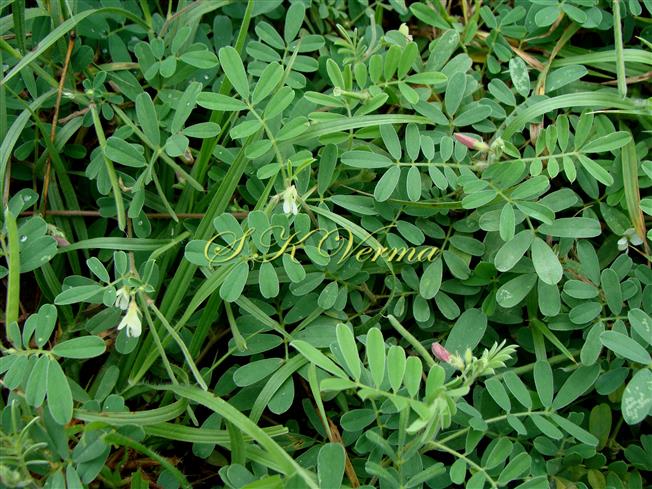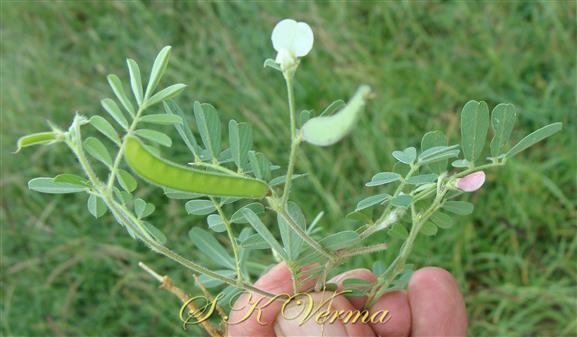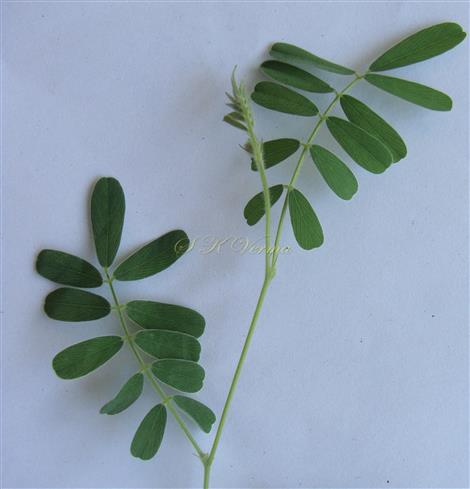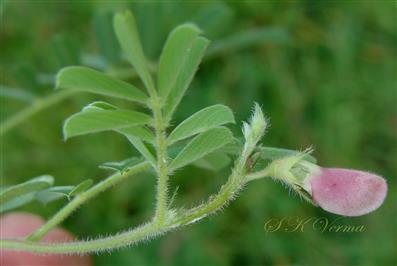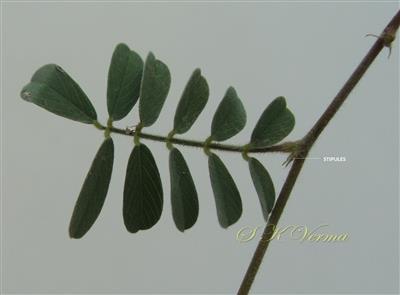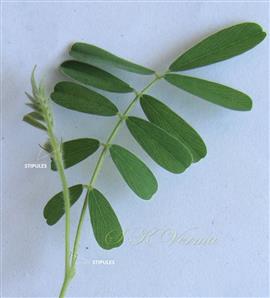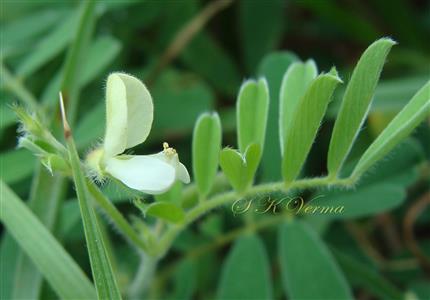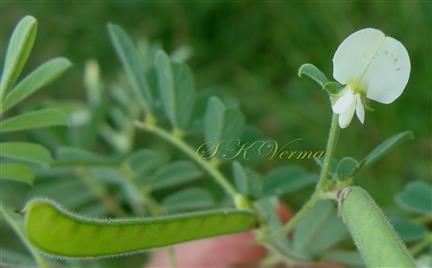TEPHROSIA
Tephrosia
Pers., Syn. Pl. 2: 328. 1807; Baker in Hook. f., Fl. Brit. Ind. 2: 110. 1879; Ali, Biologia 10: 23. 1964; Fl. Pak. @ eFloras.org p. 58; Wei & Pedley, Fl. China @ eFloras.org 10: 190.
Herbs, undershrubs or shrubs, usually sericeous. Leaves mostly imparipinnate, rarely simple, stipulate, leaflets opposite, entire, exstipellate, abaxially often sericeous (covered with fine silky hairs), entire, estipellate, lateral veins parallel, making an acute angle with midrib. Flowers bisexual, zygomorphic, 5-merous, perigynous, in leaf opposed racemes or solitary or paired in the axils of upper leaves; bracts present, usually caducous, bracteoles absent. Calyx teeth subequal or upper 2 united; petals clawed, white, cream, mauve, red or orange coloured; vexillum suborbicular, pilose externally; wings obliquely obovate or oblong; keel incurved, not beaked; wings slightly adherent to keel. Stamens 10, monoadelphous or diadelphous when the flower is fully open; anthers obtuse, uniform. Monocarpellary, ovary sessile, usually many-ovuled, placentation marginal; style incurved, often flattened, glabrous or bearded; stigma terminal, nude or penicillate (having a tuft of hairs). Legumes linear or oval, 2-valved, valves twisted, continuous within or obscurely septate between the seeds, 5-16 seeded.
358 species
Tephrosia pumila
Tephrosia pumila
(Lam.) Pers. Syn. Pl. 2: 330. 1806; Ali in Nasir & Ali, Fl. W. Pak. 100: 62. 1977; Shah, Bombay Nat. Hist. Soc. 6: 296. 1983; Kaur & Sharma, Fl. Sirmaur 268. 2004; Singh & Sharma, Fl. Chamba Dist. 288. 2006; Fl. Pak. @ eFloras.org p. 62; Galega pumila Lam. Encycl. 2: 559. 1786; G. procumbens Buch.-Ham., Trans. Linn. Soc. London 13: 547. 1822; Tephrosia purpurea L. var. pumila (Lam.) Baker in Hook. f. Fl. Brit. Ind. 2: 113. 1879.
Prostate or diffuse, much branched herb, 20-30 cm tall, annual or perennial. Stem 4-gonous, pubescent, hairs long and short. Leaves 3-8.5 cm long, imparipinnate, petioles 3-10 mm long, leaflets 7-11, 0.5-2.5 cm x 0.4-0.9 cm, lower leaflets smaller becoming progressively larger towards apex, oblong, oblanceolate or obovate, apex truncate or emarginate, mucronate, glabrous above, pilose below; secondary veins 6-9 on each side of midvein and obscure; petiolules 1-2 mm long; petioles, petiolules, rachis densely pubescent. Stipules 2.8-4 mm long, linear, hairy. Flowers bisexual, zygomorphic, 5-merous, perigynous, 8-10 mm long, in terminal or leaf-opposed 1-3 flowered racemes; pedicels 2-3.5 mm long. Bract 1.8-3 mm long, linear. Calyx 3.2-4 mm long, pilose, tube ca. 1.5 mm long, teeth 1.7-2.5 mm long, lanceolate, acute. Corolla papilionaceous, white, pale pink or purplish; vexillum suborbicular, 6-10 mm long, hairy on back; wings obliquely obovate or oblong; keel incurved. Stamens 10, diadelphous; staminal tube ca. 6 mm long; filaments 2 mm long; anthers obtuse; all uniform. Ovary with trichomes, sessile, unilocular, many-ovuled, placentation marginal; style ca. 2 mm long, incurved; stigma terminal. Legumes 2.5-4.2 cm x 0.4-0.5 cm, sessile, velvet hairy, straight or slightly curved towards apex, linear, downy, 8-14 seeded.
Common Names: Indigo Sauvage, Small Tephrosia
